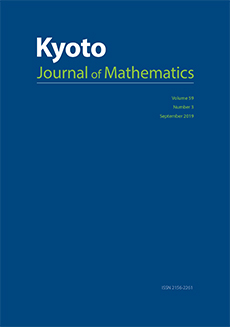Abstract
Let be a bounded domain of () containing the origin. In the present paper we establish the weighted Hardy–Sobolev inequalities with sharp remainders. For example, when and hold, we establish the following inequality.
There exist positive numbers , and such that we have
(0.1)
for any . Here , and . This is called the critical Hardy–Sobolev inequality with a sharp remainder involving a singular weight , in the sense that the improved inequality holds for this weight but fails for any weight more singular than this one. Here is a sharp constant independent of each function . Further we establish the Hardy–Sobolev inequalities in the subcritical case and the supercritical case .
As an application, we use our improved inequality to determine exactly when the first eigenvalues of the weighted eigenvalue problems for the operators represented by (the critical case) will tend to zero as increases to . This also gives us sufficient conditions for the operators to have the positive first eigenvalue in a certain nontrivial functional framework, and we study the eigenvalue problem in the borderline case.
Citation
Hiroshi Ando. Toshio Horiuchi. "Missing terms in the weighted Hardy–Sobolev inequalities and its application." Kyoto J. Math. 52 (4) 759 - 796, Winter 2012. https://doi.org/10.1215/21562261-1728857
Information





